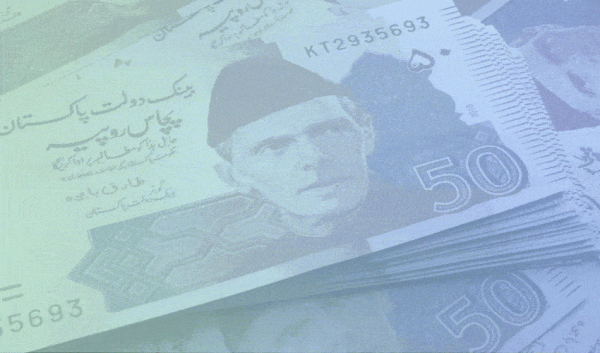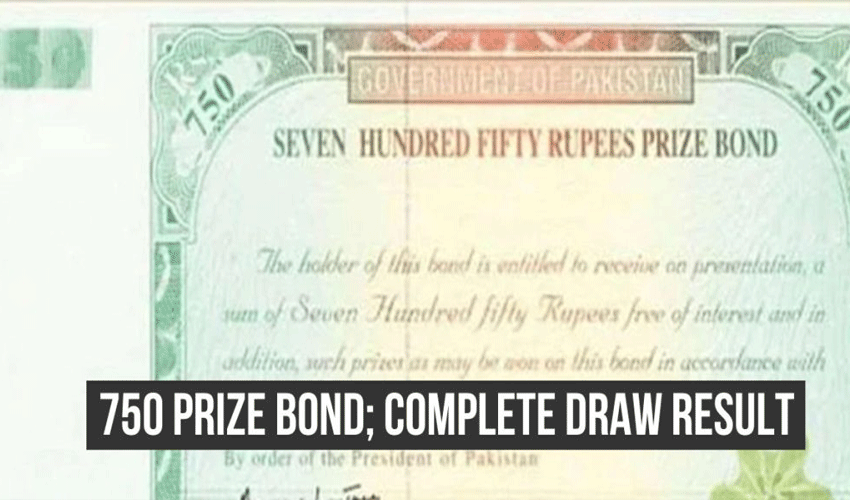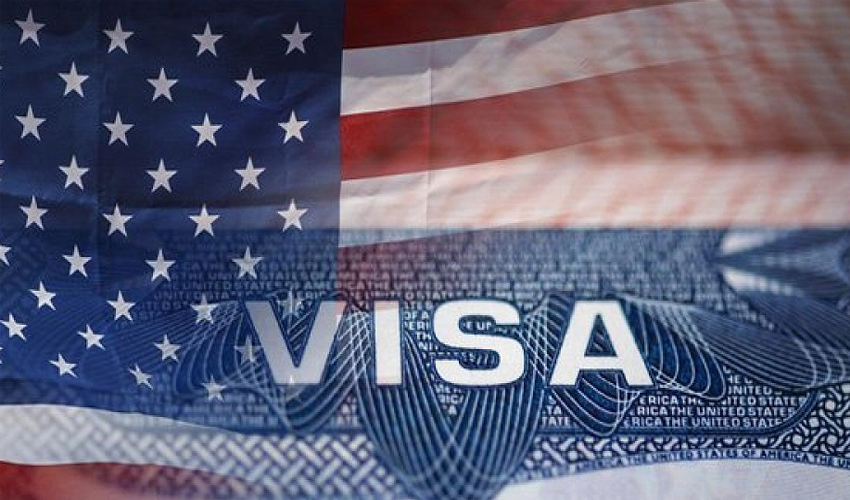A nation with a population of over 241 million, vibrant cities brimming with opportunities, and an ambitious government eager to attract both local and foreign investors. Welcome to Pakistan, a country where business dreams can turn into reality with the right knowledge and approach.
Navigating Pakistan’s intricate business landscape requires a holistic understanding of demographics, investment policies, and taxation.
With the right knowledge and strategy, entrepreneurs can unlock the vast potential of this dynamic nation and contribute to its journey toward prosperity.
Don’t worry! We’re about to transform this seemingly mundane topic into an informative yet entertaining rollercoaster ride. Let’s dive in!!!
Demographics of Pakistan

Pakistan is a demographic mosaic, shaped by a rapidly growing population and urbanization. According to the 7th Population and Housing Census in 2023, Pakistan ranks as the world’s sixth most populous country.
The population growth rate from 2003-2022 averaged at 1.84%, indicating the nation’s substantial potential for economic expansion.
Urbanization is a defining feature of Pakistan’s demographic landscape, with 36.1% of the population residing in urban areas.
Investment policies in Pakistan
To fuel economic growth and development, Pakistan has introduced the Pakistan Investment Policy 2023 (PIP 2023). This policy sets the stage for a business-friendly environment, aimed at attracting both local and foreign investments.
PIP 2023 aligns with Pakistan Vision 2025, an ambitious plan to elevate the country to upper-middle-income status. It focuses on infrastructure development and encourages foreign direct investment (FDI) as a vital catalyst for growth.
Why should you consider investing in Pakistan?
The country’s strategic location, abundant natural resources, a large and skilled workforce, and a commitment to becoming a global player in value chains make it an attractive prospect.

PIP 2023 introduces innovative strategies to enhance economic complexity and participation in global value chains (GVCs), which can be a game-changer for businesses.
This policy builds upon the foundations laid by the Investment Policies of 1997 and 2013, extending its reach to various sectors and further streamlining processes. The goal is to create industrial clusters, harmonize trade and industrial policies, and promote sustainable economic growth.
Key objectives of PIP 2023 include addressing economic priorities amidst global challenges, fostering sustainable growth in line with Sustainable Development Goals, attracting high-quality, export-oriented FDI, and boosting economic complexity through diversification.
Tax overview
Understanding Pakistan’s taxation system is vital for any business venture. The tax landscape in Pakistan includes both federal and provincial taxes, making it a multi-layered affair.

Direct taxes, like income tax, apply at both federal and provincial levels. On the other hand, indirect taxes, such as sales tax, are collected solely by the federal government.
Recent tax developments in Pakistan include the introduction of the Super Tax, Capital Value Tax on specified assets, taxes on windfall income, and reforms in Alternate Dispute Resolution Mechanisms.
These changes reflect the government’s efforts to modernize the tax system and ensure fairness. For businesses in real estate and financial instruments, Pakistan offers specific tax regulations for Real Estate Investment Trusts (REITs) and Collective/Investment Schemes, aiming to encourage investment in these sectors.
Income Tax in Pakistan

Income tax – just hearing those two words might make you yawn. But did you know that the history of income tax in Pakistan is anything but boring? It’s a tale of twists and turns, with its origins tracing back to the days of British India. Let’s take a journey through time and explore the intriguing evolution of income tax in Pakistan.
Income tax is complicated, it’s confusing, and it seems like it’s always changing. But it’s an important topic to understand because income tax is a major source of revenue for the government.
Birth of income tax
Our story begins in 1860 when the Government in India introduced ‘The Income Tax Act 1860,’ marking the birth of income tax in the region. This act established a scheduler income tax system, where different heads of income were taxed separately under various schedules. It even included a direct tax on agricultural income from land, showing that the taxman has always had a knack for finding new avenues for revenue.

However, this 1860 Act was short-lived, expiring in 1863, only to be replaced by a license tax. Income tax made a comeback in 1869 for a brief period. The 1870s and 1880s saw a see-saw of taxes and licenses due to financial difficulties.
In 1886, the Government introduced the Income Tax Act, marking a significant step towards the tax system we have today. This act continued for 32 years, laying the groundwork for income taxation.
The roaring twenties and independence
Fast forward to 1918, and the Income Tax Act of 1918 breathed new life into income tax. It introduced a total income tax, abolished the scheduler system, and made income tax filing compulsory. This was a turning point.

When Pakistan gained independence in 1947, it adopted the Income Tax Act of 1922. This act allowed tax rates to be set annually through Finance Acts.
This laid the foundation for Pakistan’s income tax system, which would evolve over the years.
The 1979 shake-up
The year 1979 marked a significant shift when General Zia-ul-Haq decided to replace the Income Tax Ordinance of 1979. The new ordinance, effective from July 1, 1979, brought changes to close loopholes in the previous system.
The rushed change in 2001
Jump to 2001 when a new Income Tax Ordinance was promulgated on September 13, under pressure from international lending institutions. It became effective from July 1, 2002. This hurried change highlighted the intricate dance between national fiscal policies and global financial pressures.
Residential status and taxable income
Now, let’s delve into the nitty-gritty. Income tax in Pakistan operates under a residence-based tax system. Residents are taxed on their global income, while non-residents are taxed only on Pakistan-sourced income.
Residential status hinges on factors like the number of days spent in Pakistan and employment status. Residents must meet specific conditions like being present in Pakistan for 183 days or more, working for the government, or being a Pakistani citizen not residing elsewhere for extended periods.
Non-residents, on the other hand, are only taxed on income generated within Pakistan’s borders. Expatriates and special provisions
Expatriates working in Pakistan bring a unique twist. A “short-term resident” concept exempts certain foreign-source income if the individual is present in Pakistan for a limited time due to employment.
Special provisions also exist for income received under aid agreements and technical assistance agreements between Pakistan and foreign governments or international organizations.
Tax rates: a peek into the present
Tax rates in Pakistan are diverse, ranging from progressive rates for individuals to proportional or flat rates for companies.
For instance, domestic companies face a general tax rate of 29%, but small companies enjoy a lower rate of 20%.

Individuals, on the other hand, face a progressive tax system, with rates increasing as income rises. This system encourages those who earn more to pay higher taxes.
The future of tax in Pakistan
The story of income tax in Pakistan is far from over. With changing economic landscapes and evolving fiscal policies, the tax system will continue to adapt. What might seem mundane at first glance is, in fact, a dynamic and ever-changing facet of our financial world.
In Pakistan, there are two types of income tax:
Individual income tax: This is the tax that individuals owe on their income.
Corporate income tax: This is the tax that businesses owe on their income.
Here are a few tips for filing your income taxes in Pakistan:
Start early. The deadline for filing your taxes is June 30th, so it’s important to start early. This will give you plenty of time to gather all of the necessary paperwork and to avoid any last-minute rush.
Keep good records. You will need to keep good records of your income and expenses in order to file your taxes accurately. This includes things like your salary slips, bank statements, and receipts for any deductible expenses.
Use a tax professional. If you are not comfortable filing your taxes yourself, you can hire a tax professional to help you. A tax professional can help you to ensure that your taxes are filed correctly and that you are getting the maximum refund possible.
The tax maze
Let’s be honest; income tax rates aren’t everyone’s idea of a thrilling topic. But what if we told you that hidden beneath the numbers and percentages is a world of complexity and intrigue? Pakistan’s income tax rates, where we’ll unravel the mysteries behind the numbers and make this seemingly dull topic surprisingly entertaining.
The tax ladder: Where do you stand?
Before we dive into the nitty-gritty, let’s understand how Pakistan’s income tax rates are structured. Taxable income is divided into categories, and each category has its own set of tax rates.

This ensures that the burden of taxation is distributed fairly based on income levels.
Category 1: The non-salaried saga
Imagine you’re not receiving a salary, but your taxable income is somewhere between zero and 75% of your total income. In this scenario, you fall into Category 1, and your tax rate varies depending on your income level.
If your taxable income is up to Rs. 600,000, you pay 0% tax.
Yes, you read that right; it’s a tax-free zone.
If your income exceeds Rs. 600,000 but stays below Rs. 800,000, you’ll pay 7.5% on the amount above Rs. 600,000.

As your income grows further, the tax rate gradually increases.
For example, if you earn between Rs. 800,000 and Rs. 1,200,000, you pay Rs. 15,000 plus 15% of the amount exceeding Rs. 800,000.
This pattern continues as your income climbs the ladder, with tax rates increasing incrementally.
So, the higher your income, the more taxes you pay, but it’s still a far cry from the daunting numbers you might have imagined.
Deemed income: the hidden gem
Now, let’s talk about “deemed income.” This is a tax on an amount equal to 5% of the Fair Market Value (FMV) of certain capital assets owned by a resident person in Pakistan.

The tax rate for this is 20%, which may sound steep, but there’s a twist.
The effective tax rate is only 1% of the FMV of the capital asset.
And here’s the kicker - this tax only applies to immovable property, so you won’t be taxed on your collection of vintage watches or classic cars.
Capital gains: where timing matters
Capital gains are like the fine print of the tax world. Depending on the nature of your asset, how long you’ve held it before selling, and various other factors, you’ll be taxed at different specified rates. This makes the income tax game feel like a chess match, where strategy is key.
Minimum tax: the tax safety net
Ever heard of “Minimum Tax”? This rule ensures that certain business entities pay a minimum tax amount, regardless of their actual profit or loss. For instance, a resident company, an individual, or an association of persons (AOP) with a turnover of Rs. 100 million or more falls into this category.
But don’t worry; this isn’t a one-size-fits-all scenario. The tax liability is only triggered if it’s higher than 1.25% of turnover. So, even if your business isn’t making a profit or falls under exemptions, you still contribute to the nation’s finances.
Alternative corporate tax: the accounting twist
Corporate taxpayers, on the other hand, have an alternative. They can choose to pay tax at the rate of 17% of their accounting income (the profit before taxes as shown in their financial statements). This provides flexibility for businesses to optimize their tax liabilities.
For example, if a company’s accounting income is higher under the alternative corporate tax than under the general provisions, they can carry forward the excess tax paid to offset future liabilities. It’s like having a financial safety net, ensuring taxes are paid even when profit margins are thin.

Final tax regime: simplicity for some
Lastly, there’s the “Final Tax Regime.” This is a simplified approach where certain individuals or income streams pay tax on a percentage of their gross receipts, eliminating the need for detailed accounting or tax audits. It streamlines the process and eases the burden of tax compliance.
Tax deadlines: the countdown
Of course, to make sense of all these tax rates and rules, you need to meet deadlines. Taxpayers in Pakistan have various return and statement obligations, including annual filings, quarterly advance tax deposits, and withholding tax statements. Missing these deadlines can lead to penalties and fines, turning your tax adventure into a tax nightmare.
So, there you have it - Pakistan’s income tax rates and rules, demystified and presented in a way that’s hopefully a bit more engaging than your average tax seminar.
Navigating Pakistan’s taxation landscape: a rollercoaster of regulations
Buckle up, because we’re about to take you on a whirlwind tour of Pakistan’s tax regulations. Yes, taxes might not be the most thrilling topic, but trust us; there are twists, turns, and surprises hidden in the fine print of the Income Tax Ordinance (ITO). Let’s dive in!
Taxation of Persons Not on the Active Taxpayers List (ATL)
First up, the ATL. This list is like the VIP club of taxpayers, and if you’re not on it, you face some tax-related adventures.
If you’re not on the ATL, the taxman is going to turn up the heat. Certain withholding tax rates are increased by 100%, and in some cases, a staggering 250%! It’s like paying double or even triple the regular rate.
But don’t worry; there’s a way out. If you’re not required to file an income tax return, you can get an exemption certificate from the Commissioner. If they don’t issue it within 30 days, you’re automatically granted permission not to have tax deducted at the enhanced rate.
Now, if taxes are deducted at the higher rate, and you still don’t file your return, the Commissioner can swoop in with a provisional assessment order. That’s like a tax superhero coming to save the day, or maybe not!
Purchasing assets: the banking channel drama
The tax code wants to discourage cash transactions and promote transparency. So, when you’re buying big-ticket items like property worth more than Rs. 5 million or other assets exceeding Rs. 1 million, it’s a strict “no cash allowed” situation.
You have to use crossed cheques, demand drafts, or other banking instruments for these transactions. If you don’t, you’re in for a double whammy: disallowed depreciation/amortization and a penalty of 5% of the purchase value. Ouch!
Digital payments: a 21st century tax tale
In the age of digital everything, the government is encouraging businesses to embrace digital payments. If you’re a company, and you want to claim an expense exceeding PKR 250,000, it has to be paid through digital means from your business bank account.
But there are exceptions, like small expenses under Rs. 25,000 and essential payments like utility bills, travel fares, and taxes. However, these rules are waiting for official notification from the Federal Board of Revenue (FBR).
Tax administration and dispute resolution
In Pakistan, tax administration involves audits by the Federal Board of Revenue (FBR). If you disagree with their assessment, the appeals process starts. It’s a bit like climbing a ladder with rungs labeled Commissioner (Appeals), Appellate Tribunal, High Court, and even the Supreme Court.
Alternative dispute resolution: the tax truce
The tax world has its version of diplomacy - it’s called the Alternative Dispute Resolution (ADR). This system offers a simpler and less formal way to resolve tax disputes. If your tax liability is over PKR 100 million, you can opt for ADR. It’s like tax negotiations, and you can offer to pay your tax dues and resolve the dispute. If both parties agree, it’s a win-win.
Avoidance of double taxation: the global tax safety net
Nobody wants to pay taxes twice on the same income, right? That’s where double taxation avoidance agreements (DTAAs) come into play. Pakistan has signed these agreements with various countries to ensure that you’re not taxed on the same income by multiple nations. It’s like a global tax safety net.
Anti-avoidance: closing the loopholes
Anti-avoidance provisions are the tax code’s way of saying, “You can’t outsmart us.” These rules prevent tactics used to reduce or avoid taxes. For example, transfer pricing regulations make sure related parties don’t manipulate prices to reduce tax liabilities. And if a transaction doesn’t have any real economic effect, it can be disregarded.
Automatic exchange of information: the tax transparency revolution
Pakistan is part of the global movement toward tax transparency. The country has joined international agreements for the automatic exchange of financial information, allowing tax authorities to share data about taxpayers’ financial accounts. This helps prevent tax evasion and ensures everyone pays their fair share.
Sales Tax on Goods

Taxing tale of sales tax on goods in Pakistan; a journey from partition to present
The intricate world of sales tax on goods in Pakistan – from its provincial origins to its current federal form – this tax system plays a crucial role in the country’s revenue collection and distribution.
For businesses and retailers, understanding these regulations is vital for compliance, while consumers may find it enlightening to peek behind the curtain of taxation that affects their purchases.
While this subject might not initially sound like a thrilling read, bear with us, for within these paragraphs lies the story of how a provincial tax transformed into a federal affair, and how it impacts retailers and consumers alike.
Provincial origin
At the time of partition when sales tax was primarily a provincial levy, it was administered in the provinces of Punjab and Sindh, collecting revenue from goods sold within these regions. However, in 1948, a significant shift occurred.
The General Sales Tax Act 1948 declared sales tax a federal subject, ushering in a new era in tax regulation.
The federal sales tax system
Today, sales tax in Pakistan operates as a Value Added Tax (VAT) system, an indirect tax that affects the consumption of goods by the general public. It applies throughout the supply chain, from importers to retailers, with a few exceptions.
The aim is to shift the ultimate tax burden onto the final consumer while sparing intermediaries.
Retailers in focus
One of the most notable aspects of the current sales tax system is its treatment of retailers. They are divided into two categories, each with its own set of rules.
1. Tier 1 retailers
This group includes national or international chains, retailers in air-conditioned malls, those with credit and debit card machines, and those with high electricity bills, wholesaler-cum-retailers, and retailers who accept digital payments.

For Tier 1 retailers, sales tax is charged at a standard rate of 18%.
2. Tier 2 retailers
The second category consists of smaller retailers who do not meet the criteria for Tier 1.
They are not required to register for sales tax, and they pay a fixed percentage of their monthly electricity bills, either 5% or 7.5%, depending on their bill amount.
Importantly, they cannot claim input tax adjustment, and they are exempt from filing monthly sales tax returns.
Tax rates and further tax
The standard sales tax rate in Pakistan is 18%. However, an additional 4% is charged on goods supplied to unregistered persons.
This further tax doesn’t apply to certain items like electrical energy, natural gas, and specific fuels.
Special rates and fixed taxes
The tax landscape isn’t one-size-fits-all. The Federal Board of Revenue (FBR) has the authority to set lower or higher tax rates on specified items.

This flexibility allows for tailored taxation based on the nature of the goods.
Exports and zero-rated supplies
Export-oriented sectors like textiles, carpets, leather, sports, and surgical goods are typically taxed at the standard rate of 18%.

However, for certain conditions, such as maintaining a 4% value addition during the last six months, the rate can be reduced to 7.5%.
Third schedule items
Goods falling under the Third Schedule of the Sales Tax Act are taxed based on the recommended retail price set by the manufacturer or importer.
This price must be clearly marked on the product label, along with the sales tax amount. Wholesalers and retailers also charge this tax when they sell these goods.
Who pays the tax?
The responsibility for paying sales tax falls on different parties depending on the situation. The person making the supply is usually responsible for remitting the tax.
However, certain cases, specified by the FBR with the approval of the Federal Minister, reverse this responsibility.

Exemptions and Incentives
There are various exemptions and incentives within Pakistan’s sales tax framework. These include zero-rated supplies, which allow suppliers to credit/adjust their input tax. Exempt supplies, on the other hand, are not subject to sales tax.
Input tax adjustment
Input tax adjustment is a crucial element for registered businesses. However, not all input tax is admissible, and there are restrictions. Input tax cannot be claimed for goods and services unrelated to taxable supplies or for personal or non-business use.
Restriction on Input Tax
Registered businesses are not allowed to adjust input tax in excess of 90% of their output tax. This restriction aims to ensure that businesses do not benefit excessively from input tax adjustments. The excess input tax cannot be refunded but can be carried forward to the next period.
Sales Tax on Services

When services get taxed
Picture this: you’re about to enjoy a leisurely weekend, planning to order a delicious meal through a food delivery app, catch a movie on your favorite streaming platform, and maybe even book a relaxing spa treatment online. What if I told you that your weekend indulgences are a part of a complex tax tango known as the sales tax on services? Don’t worry; this isn’t an attempt to dampen your spirits.
Instead, we’re about to embark on a journey through the quirky world of sales tax on services, where provincial governments wield their tax wands in amusing ways.
Introduction to the tax ballet: Goods vs. Services
Most people are familiar with the idea of sales tax slapped onto physical goods - you buy a snazzy gadget, and there it is, that extra sum that the government claims.
But wait, what about those moments when you’re booking a flight, subscribing to a streaming service, or getting your car repaired? Enter the provincial sales tax on services.

While the federal government takes care of taxing goods, provinces in many countries, including Pakistan, have decided to give services a slice of the tax pie.
Taxpayer’s boogie: Self-assessment & compliance
Now, imagine a tax system where the taxpayer plays both the lead dancer and the choreographer. In the world of provincial sales tax on services, this is reality.
Taxpayers are entrusted with tasks like issuing tax invoices, determining their tax liabilities, filing sales tax returns, making tax payments, and maintaining meticulous records of their taxable escapades. It’s like stepping onto a dance floor where the moves are both tricky and crucial.
Place of provision of services
To make things even more interesting, authorities have crafted intricate rules to determine where the tax taps its toes. For instance, when it comes to advertisements, the location of a satellite’s beaming station or a TV channel’s landing rights can decide the tax’s destination. Even the virtual world isn’t spared - if an advertisement is placed on a website owned by someone not residing in Pakistan, the tax shuffle happens at the place of booking.
Theatrical twists: Insurance and reinsurance
Insurance services bring their own dramatic flair to the stage. The location of an insurance company’s office or branch might dictate where the tax performance unfolds. If you’re insuring movable property, the place of registration becomes the star of the show.

Marine insurance of goods choreographs its dance based on the port of embarkation or dis-embarkation. And don’t forget the dance partners - insurance agents and brokers, whose locations determine the tax’s rhythm.
Invisible strings: Intellectual property and franchise services
Intangible yet impactful, intellectual property and franchise services elegantly waltz through the tax landscape.
If a person, whether residing in Pakistan or not, provides these services, the spotlight shines on the location of the recipient.
But if the tax hasn’t found its way to a particular province, the resident provider’s location takes the lead.
Highway jigs: Transportation of goods and power transmission
Transportation services, like road trips for goods, have their own set of moves. If a service originates and ends within the same province, that province becomes the dance floor.
And if the tax rates are different in the starting and ending provinces, the invoice becomes the dance partner, showcasing the tax split.

Electric power transmission services join the dance with their own intricacies. Whether originating and terminating within the same province or leaping between tax rates, these services execute a precise performance where tax equality takes center stage.
The grand finale: Provincial tax schemes
In this grand performance, different provinces play their parts with slight variations. Punjab, KPK, Baluchistan, Sindh, and Islamabad Capital Territory each have their own revenue authority and tax rates. These regional tax operas have captivating casts of tax rates for active and non-active entities, along with withholding tax rates that could make your head spin.
Reverse charge and export of services
The tax ballet isn’t complete without surprise twists. In the reverse charge routine, if a resident person receives a taxable service from a non-resident, they’re handed the tax bill. And when it comes to exporting services, the rules get more complex. While many services are exempt from sales tax on export, there are provinces that have decided to tax certain service categories.
So, the next time you’re unwinding with your favorite services, remember that you’re not just indulging in relaxation; you’re participating in a charming, if perplexing, fiscal performance.
Federal Excise Duty

Federal Excise Duty may not be the star of the tax world, but it’s a complex and intriguing character with its own quirks and rules. From its selective nature to the art of adjustment, and the enticing incentives, FED keeps the financial world on its toes.
Now, before you let your eyelids droop, thinking this is just another dry discussion about taxes, hold your horses! FED is not your ordinary run-of-the-mill tax; it’s a complex, multi-faceted creature with more quirks and twists than your favorite mystery novel.
So, put on your tax detective hat, and let’s explore the intriguing universe of FED.
What is Federal Excise Duty, anyway?
Picture this: You’re strolling through a bustling marketplace, eyeing those tempting goods on display. Little do you know that lurking in the background is our protagonist, Federal Excise Duty, or FED for short.

FED is essentially a tax, but it’s not out to get your everyday purchases. Instead, it sets its sights on specific goods and services outlined in the First Schedule of the Federal Excise Act. These items, my friends, are the chosen ones that bear the FED burden. The rest are safe, at least from this particular tax collector.
Now, here’s the twist: while FED is only levied on goods and services listed in the First Schedule, Section 16 throws in a curveball. It boldly states that everything is exempt from FED, except for the items on that First Schedule. Confused? Don’t worry; you’re not alone.
The bottom line is, FED applies to goods and services on the list, while sales tax goes after all goods unless they’re granted a specific exemption. Sneaky, right?
The not-so-secret lives of FED
Now that we’ve got the basics down, let’s dive deeper into the secret lives of FED. Here are some salient features that’ll make you look at this tax in a whole new light:
FED on services: Normally, services taxed under provincial sales tax are safe from FED.
But watch out for exceptions like passenger air travel, inland carriage of goods, services from port and terminal operators, and chartered flights.
Geography matters: Goods produced in non-tariff areas (like Azad Jammu and Kashmir) but brought into tariff areas will face FED. Think of it as crossing tax borders.
Imports included: Anything imported into Pakistan, no matter its final destination, is fair game for FED.
FED math: The amount of FED you pay can vary. It might be calculated based on the value of the goods (ad valorem), their retail price, weight, quantity, measurement, units, charges, bills of lading, premiums, production capacity, machinery, establishment, installation, or even a fixed amount for certain goods or services.
FED sure knows how to keep accountants on their toes.
Art of FED adjustment
Now, here’s where things get interesting. FED isn’t always a one-way street.
If you’re a registered person and can prove that you’ve paid FED on goods used as direct inputs for manufacturing other excisable goods, you’re in for some adjustment magic.

Just make sure you’ve got the receipts – in the form of purchase invoices, goods declarations, or other official documents in your name.
But wait, there’s a catch! Input tax adjustment is only available to manufacturers, and it’s strictly for goods used as direct inputs in the manufacturing process of excisable goods.
It’s like a tax rebate for the industrious souls out there.
Incentives to sweeten the deal
FED, like any good tax, has its sweeteners. If your goods are headed for foreign shores, you might be in luck. FED doesn’t apply to goods exported out of Pakistan or those specified by the Federal Government.

And, in a stroke of genius, the Federal Board of Revenue can offer a refund of duty paid on goods used for manufacturing products that are later exported.
Plus, provisions and stores for ships and aircraft heading out of Pakistan are FED-free.
But here’s the plot twist: the FBR can also slap a “no refunds for you” sticker on certain exports to certain countries. It’s a mystery only they can solve.
Who is liable to pay FED?
FED is payable by the manufacturer, importer, or distributor of goods and services that are subject to the tax. In some cases, FED may also be payable by the consumer.
Here are some additional things to keep in mind about FED:
• FED is a self-assessed tax, which means that businesses are responsible for determining their own liability for the tax.
• FED returns must be filed on a quarterly basis.
• Late filing or non-filing of FED returns can result in penalties and interest.
• Businesses that fail to pay FED when due may be subject to enforcement action by the FBR.
• If you have any questions about FED, you should consult with a tax advisor.
Customs Duty

So, there you have it, the customs duty is not all black and white; there are complexities and nuances that can make your head spin faster than a rollercoaster. But understanding these intricacies is essential for businesses and individuals involved in international trade.
This may sound as thrilling as watching paint dry, but trust me, it’s more like discovering hidden treasures in a labyrinth. While customs duty might not be the amazing topic out there, it’s a vital component of international trade and has a significant impact on the economy.
Let’s dive in and uncover the secrets of Pakistan’s customs duty landscape.
Customs duty is an important source of revenue for the government of Pakistan. It also helps to protect local industries from foreign competition. If you are importing goods into Pakistan, it is important to be aware of the customs duty regulations. You can find more information on the customs duty regulations on the website of the Federal Board of Revenue.
Customs duty 101
Our story begins with the Customs Act of 1969. Yes, it’s been around for a while and has seen its fair share of amendments, but it’s still the big boss when it comes to customs duty in Pakistan. Customs duty is the toll you pay when you bring goods into Pakistan from another country, move goods from one Customs station to another, or liberate goods from a bonded warehouse.
Now, here’s the kicker: the Federal Government holds the magical power to decide whether certain goods are exempt from these duties. They’re like the fairy godmother of trade, waving their wand and saying, “You shall not pay duty!”
The salient features
Harmonized system
Think of this as the magical sorting hat from Harry Potter, but for goods. Pakistan uses the Harmonized System to classify items, which then determines their customs duty rates.
These rates are listed in the Pakistan Custom Tariff, which is as extensive as a book series with 99 chapters. The duty rate can range anywhere from 0% to a dramatic 100%.
Custom value
To calculate customs duty, you need to know the custom value of your goods. It’s not just the sticker price; it includes the actual price you paid for the goods when they were exported to Pakistan.
Plus, you have to throw in the cost of transportation (excluding inland freight), loading, unloading, handling, and insurance. It’s like a giant customs duty salad – all the ingredients matter.

Reduced rates of duty
Sometimes, Pakistan wants to give its local industries a boost. To do this, they have a special list called the Fifth Schedule of the Customs Act, 1969. Goods listed here can enjoy reduced rates of duty, but there are strings attached in the form of conditions and restrictions.
Additional customs duty
The Federal Government has a secret weapon called Section 18(5) of the Customs Act, 1969. It allows them to impose additional customs duty through a gazette notification, but it can’t exceed 35% of the goods’ value.
It’s like an extra tax, just when you thought you’d paid your dues.
Regulatory duty
Ever heard of a “short-term adjustment in imports”? Pakistan uses regulatory duty, permitted under Section 18(3) of the Customs Act, 1969, to achieve this. Through a gazette notification, the Federal Government can slap additional charges on imported or exported goods. These can range from 0% to a jaw-dropping 100%, but they can’t exceed the value of the goods.
No export duty
Good news for those shipping goods from Pakistan – there’s no export duty! You can send your locally made treasures off into the world without worrying about a customs bill on the way out.
Exemptions for a cause
Sometimes, goods are imported with the intention of exporting them later. In such cases, the Chief Customs Authority can give them a pass, but under certain conditions.
For example, goods that are imported for personal use are exempt from customs duty, up to a certain limit. Additionally, goods that are imported for charitable purposes are also exempt from customs duty.
Duty repayment for the greater good
If you import goods for production, manufacturing, or repair, and it’s approved by the Federal Government, you might get your duty back. It’s like getting a refund on your taxes, but with more paperwork.
Duty drawback
Imagine paying customs duty on imported goods and then exporting them. Well, you’re in luck! Pakistan has a system where seven-eighths of that duty can be repaid as a drawback. But there’s a catch – you have to do this within two years, or maybe three if you’re lucky and get an extension.
In some cases, customs duty that has already been paid can be repaid as drawback. This is possible if the goods are subsequently exported from Pakistan.
Here are a few entertaining facts about customs duty in Pakistan;
The highest rate of customs duty in Pakistan is 100%. This rate is applied to goods that are considered to be harmful to the economy or society.
The lowest rate of customs duty in Pakistan is 0%. This rate is applied to goods that are considered to be essential or that are imported for charitable purposes.
The most common rate of customs duty in Pakistan is 25%. This rate is applied to a wide range of goods, including electronics, clothing, and food.
Understanding Corporate Laws

Welcome to the wild world of corporate laws in Pakistan! As you gear up for your business adventure, let’s take a thrilling safari through the dense legal jungle of corporate regulations.
The Big Five - forms of companies
In Pakistan, businesses can take various forms, much like the animal kingdom’s diverse species. Here are the major types:
1. Company limited by shares
This is the king of the corporate jungle. Shareholders’ liability is limited to the unpaid amount on their shares, ensuring they won’t be chased by financial predators beyond their investment.
2. Company limited by guarantee
Here, members commit to contributing to the company’s assets if it’s winding up while they’re still on board or shortly after they leave. It’s like an insurance policy for the corporate savannah.
3. Unlimited company
These companies roam without limits, as the name suggests. But they’re more like the elusive creatures of the corporate world, often seen in the shadows.
4. Private company
Private companies are like tightly-knit herds. They restrict share transfers, limit their membership to fifty, and avoid public gatherings for share or debenture subscriptions.
5. Single-member company
A single-member company is like a solo adventurer in the corporate wilderness. It’s ideal for individuals who want limited liability but still need a sidekick (a nominee director) in case things get tricky.
The enigma of Limited Liability Partnership (LLP)
Limited Liability Partnerships are the chameleons of the business world, blending the features of partnerships and companies.
Partners here enjoy limited liability, unlike traditional partnerships where they are more exposed to the wilds of financial liability. In an LLP, they can manage the business directly, much like independent hunters.
Public vs. Private companies
Public companies are the social butterflies of the corporate jungle, requiring a minimum of three members and having no restrictions on share transfers.

They can even strut their stuff on the stock exchange, but only after winning over at least 500 shareholders.
Meanwhile, private companies keep things cozy with a maximum of fifty members, limited share transfers, and no public share-and-tell sessions.
Special considerations for foreign companies
Foreign companies eyeing the Pakistani landscape must secure approval from the Board of Investment (BOI) to establish their presence. It’s like obtaining a visa to explore a new territory.
The wildlife guide: policy parameters
Foreign companies have different hunting grounds depending on their sectors: Manufacturing Sector: No special permissions required, just watch out for a few specified industries like arms and ammunitions or high explosives.
Agriculture: No need for extra permits, but keep in mind the specifics of Corporate Agriculture Farming (CAF).
Infrastructure and Social Services (including IT and Telecom): Specific licenses may be required, but there’s ample room for foreign companies to roam.
Dividends, Royalties, and the Money Trail
Dividends can be remitted to non-resident shareholders once a bank is nominated by the company. Royalties and technical fees can also be dispatched smoothly, but there are rules to follow.
Manufacturing sectors have their own conditions for remittance.
Non-manufacturing sectors have a USD 100,000 lump-sum limit, keeping things simple.
Loans and guarantees

Foreign-controlled companies can take loans for working capital, but they must adhere to strict terms.
Rupee loans are allowed for capital expenditures in manufacturing, but other sectors need special permission.
Loans against guarantees of non-residents are a common practice, as long as you’re playing by the rules.
The exotic world of foreign directors
Foreign nationals are welcome to become directors in Pakistani companies. It’s like inviting an exotic bird to join your local flock. All it takes is a clearance from the Ministry of Interior.
Foreign directors need to submit passport copies, personal profiles (basically their resumes), and an affidavit promising to transfer shares if they don’t get that all-important security clearance.
The quest for registration
To embark on this corporate safari, you’ll need a few documents for registration:

• Passport copies of foreign subscribers.
• Four copies of the Memorandum and Articles of Association (in case of offline submission).
• Forms for declarations, registered office details, director particulars, and Ultimate Beneficial Owners.
• The all-important registration fee, paid at any authorized branch of MCB Bank Limited.
As you navigate the corporate terrain in Pakistan, remember that the jungle has its rules, but it also has its rewards.
With the right knowledge and preparation, you can make your business venture a thrilling and successful expedition.
So, pack your legal survival kit, put on your corporate explorer’s hat, and venture forth into the world of business in Pakistan. The wild awaits!
Which type of company is right for you?
The type of company that is right for you will depend on a number of factors, including the size of your business, the amount of capital you need, and your goals for the business.
If you are starting a small business with a few partners, a private company may be the best option for you.
If you are looking to raise a large amount of capital and have a high-profile business, a public company may be the best option for you. And if you are looking for a hybrid option that offers the benefits of both private companies and public companies, an LLP may be the best option for you.
No matter which type of company you choose, it is important to consult with an attorney to ensure that you are complying with all applicable laws and regulations.
Pakistan’s Foreign Exchange Laws for Business Success

Buckle up as we unravel the mysteries and secrets of conducting business in Pakistan!
1. Foreign Exchange Regulations
Picture this: you’re a business enthusiast ready to take a plunge into the Pakistani market.
As you step onto this bustling stage, you’ll be waltzing to the rhythm of the “Foreign Exchange Regulation Act, 1947.”
This act is the star of the show, directing the tango of foreign currencies within the country. The State Bank of Pakistan (SBP) takes the lead here, setting the rules and ensuring everyone’s toes stay in line.
But here’s the plot twist - foreign investment in Pakistan gets the VIP treatment. The “Foreign Private Investment (Promotion and Protection) Act, 1976” rolls out the red carpet for foreign investors.
It’s like an insurance policy for your investments, guaranteeing that you can waltz out of Pakistan with your original investment, profits, and any capital appreciation. Impressive, right? However, the business world is a dynamic stage, and new characters enter the scene.
The “Foreign Currency Account Rules, 2020” made their grand entrance in October 2020.
These rules, while shaking up the dance floor, limit the types of funds that can be credited to foreign currency accounts. Keep an eye on these updates; they might just change your choreography.
2. Thrill of possessing foreign currency
Now, this is where Pakistan’s foreign exchange laws show their open-mindedness. Pakistan welcomes both residents and non-residents to strut into the country with foreign currency in tow. No restrictions, no questions asked. This openness encourages international trade and investment, making Pakistan a stage fit for global players.
But don’t get too carried away; there’s a catch. You can bring in all the foreign currency you want, but when it’s time to exit the stage, you’re limited to USD 10,000. It’s like a curfew for your dollars. So, plan your financial finale accordingly.
3. The enigmatic foreign currency accounts
Imagine having a secret vault where you can stash your foreign currency, accessible only to a select few. Well, in Pakistan, foreign firms, companies, and individuals have a chance to maintain these secret vaults, known as “foreign currency accounts” (FCAs), with banks. But here’s the twist - there are conditions. The Foreign Exchange Manual holds the map to these treasure chests. These accounts are your backstage pass to manage your foreign currency holdings within Pakistan’s financial realm.
4. The Roshan Digital Account Revolution
Cue the drumroll for Pakistan’s superstar initiative - the Roshan Digital Account scheme!
This is the plot twist every foreign investor has been waiting for. Overseas Pakistanis can now invest in Pakistan’s stock market and real estate funds without needing to physically fly into the country. It’s like investing in a blockbuster movie while sipping tea in your pajamas.
The magic of the Roshan Digital Account doesn’t stop there. Funds in these accounts can be repatriated without the hassle of seeking prior approval from the SBP. It’s the showstopper feature that’s changed the game for Non-Resident Pakistanis (NRPs) and foreign investors alike.
5. The Revolution in Disinvestment Proceeds
In the world of business, disinvestment proceeds are the bittersweet notes of the finale.
But in Pakistan, this melody is changing. Now, companies can remit disinvestment proceeds to non-resident shareholders without the need for prior SBP approval. The banks take center stage, processing these remittances with fewer documents and fewer headaches. It’s a harmonious ending to a long and complex symphony.
Laws that light the way for foreign investments
Now that we’ve conquered the intricacies of foreign exchange, let’s move on to some groundbreaking laws that Pakistan has introduced to pave the way for foreign investment and economic growth.
1. The Special Investment Facilitation Council (SIFC):
Think of it as your business fairy godmother. This council has the power to make dreams come true by issuing recommendations, relaxing regulatory requirements, and acting as a one-stop-shop for international investors. It’s the secret ingredient in Pakistan’s recipe for a thriving investment climate.
2. Export-Import Bank of Pakistan (EIBP):
This institution is like a financial genie, granting wishes to businesses engaged in international trade. From trade financing to trade credit insurance, it’s here to make cross-border deals smoother and more secure.
3. Regulation of Mines and Oilfields and Mineral Development Amendment Act, 2022:
For those seeking treasures in Pakistan’s mineral-rich lands, this amendment empowers provincial governments to negotiate agreements for mineral exploration and development. It’s the map to the kingdom’s hidden treasures.
4. Inter-Governmental Commercial Transactions Act, 2022:
This act is the key to unlocking economic collaborations between Pakistan’s federal government and foreign states. It paves the way for government-to-government agreements, ensuring that both parties reap the benefits.
5. Foreign Investment (Promotion and Protection) Act, 2022:
Remember that dream project in Balochistan? This act ensures that investors get the royal treatment with incentives, tax exemptions, and long-term security, even if the script changes.
So there you have it, intrepid business explorers.
Pakistan’s foreign exchange laws are like the choreography of an intricate dance. Master them, and you’ll waltz your way to success on this captivating stage of business opportunities.
With these laws and initiatives in your toolkit, you’re poised for an exhilarating journey into the land of limitless potential. Break a leg!



























